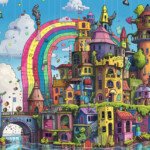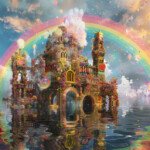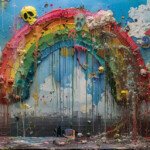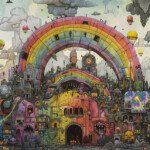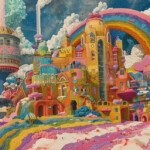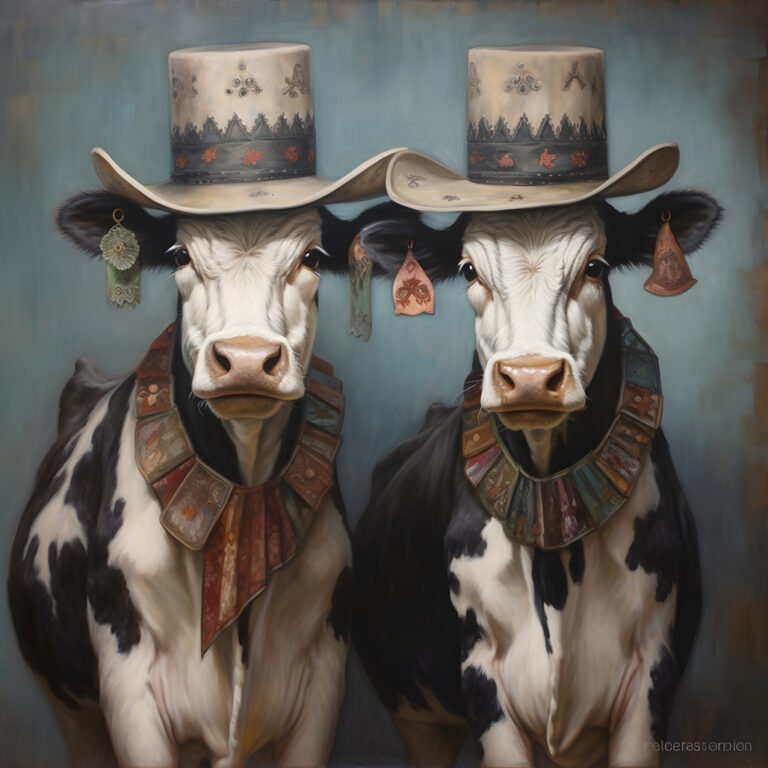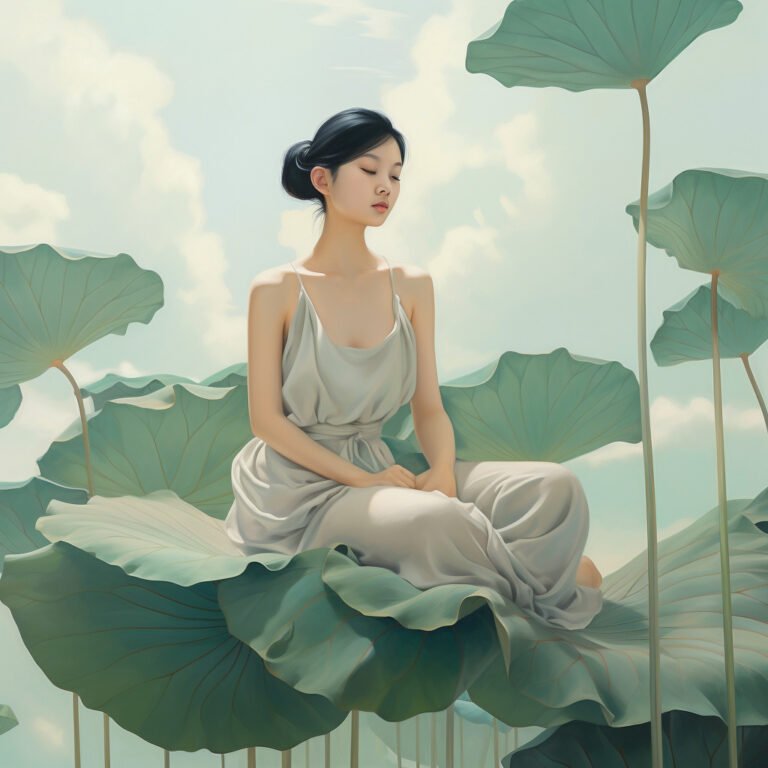Wir bauen eine Regenbogen
Die vergangenen Jahrzehnte haben durch ihre rein technische und wissenschaftliche Betonung die optische Sinnenfreude getötet. Grau in graue Steinkästen traten an die Stelle farbiger und bemalter Häuser. Die durch Jahrhunderte gepflegte Tra-dition der Farbe versank in dem Begriff »Vornehmheit«, der aber nichts anderes ist als Mattheit und Unfähigkeit, das neben der Form wesentlichste Kunstmittel im Bauen, nämlich die Farbe, anzuwenden. Das Publikum hat heute Angst vor dem farbigen Haus und vergißt, daß die Zeit nicht so lange her ist, in der die Archi-tekten keine schmutzigen Häuser bauen durften und in der man kein Haus ver-schmutzen ließ. Wir Unterzeichneten bekennen uns zur farbigen Architektur. Wir wollen keine farblosen Häuser mehr bauen und erbaut sehen und wollen durch die-ses geschlossene Bekenntnis dem Bauherrn, dem Siedler, wieder Mut zur Farben-freude am Innern und Äußern des Hauses geben, damit er uns in unserem Wollen unterstützt. Farbe ist nicht teuer wie Dekoration mit Gesimsen und Plastiken, aber Farbe ist Lebensfreude, und, weil sie mit geringen Mitteln zu geben ist, deshalb müssen wir gerade in der Zeit der heutigen Not bei allen Bauten, die nun einmal aufgeführt werden müssen, auf sie dringen. Wir verwerfen den Verzicht auf die Farbe ganz und gar, wo ein Haus in der Natur steht. Nicht allein die grüne Sommer-landschaft, sondern gerade die Schneelandschaft des Winters verlangt dringend nach der Farbe. An Stelle des schmutzig-grauen Hauses trete endlich wieder das blaue, rote, gelbe, grüne, schwarze, weiße Haus in ungebrochen leuchtender Tönimg.
Bruno Taut
aus: https://www.degruyter.com/document/doi/10.1515/9783038217022.97/html?lang=de
We are building a rainbow
The purely technical and scientific emphasis of the past decades has killed the visual pleasure of the senses. Grey in grey stone boxes took the place of colorful and painted houses. The centuries-old tradition of color sank into the concept of „nobility“, which is nothing more than dullness and the inability to use the most essential artistic medium in building, next to form, namely color. The public today is afraid of the colored house and forgets that the time was not so long ago when architects were not allowed to build dirty houses and when no house was allowed to be soiled. We, the undersigned, are committed to colorful architecture. We do not want to see any more colorless houses built and constructed and, through this united commitment, we want to give the builder, the settler, the courage to enjoy the color of the interior and exterior of the house again, so that he supports us in our intention. Color is not as expensive as decoration with cornices and sculptures, but color is the joy of life, and because it can be given with little means, we must insist on it in all buildings that have to be built, especially in these times of need. We completely reject the renunciation of color where a house stands in nature. Not only the green summer landscape, but also the snowy winter landscape urgently requires color. In place of the dirty gray house, the blue, red, yellow, green, black, white house in its unbroken shining hue should finally take its place again.
Bruno Taut
from: https://www.degruyter.com/document/doi/10.1515/9783038217022.97/html?lang=de






